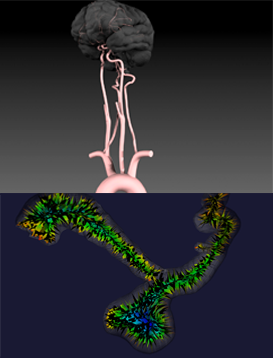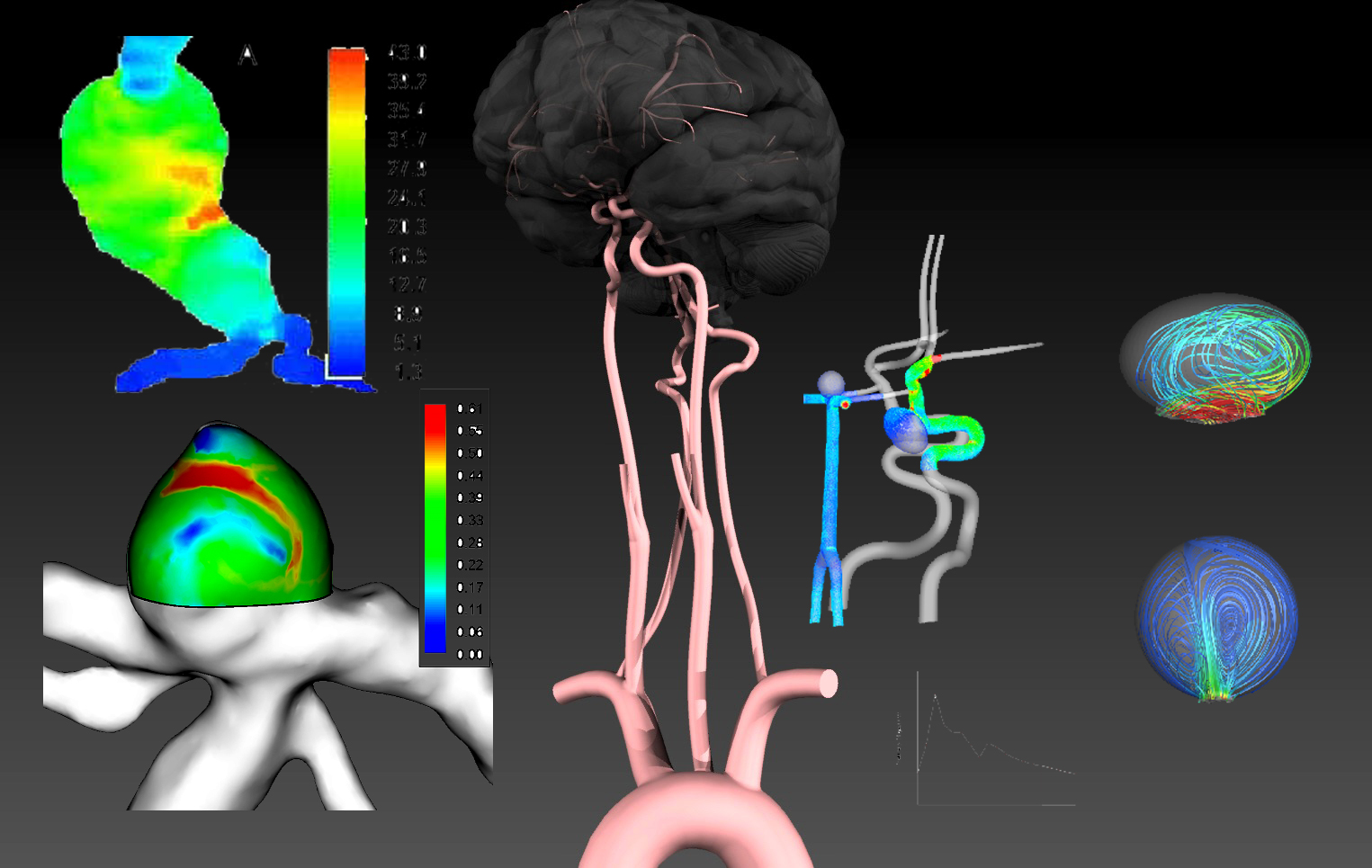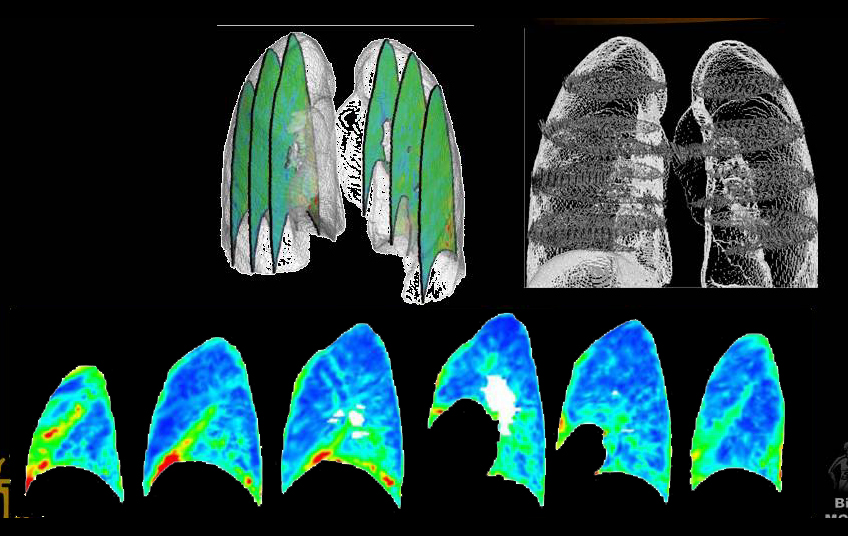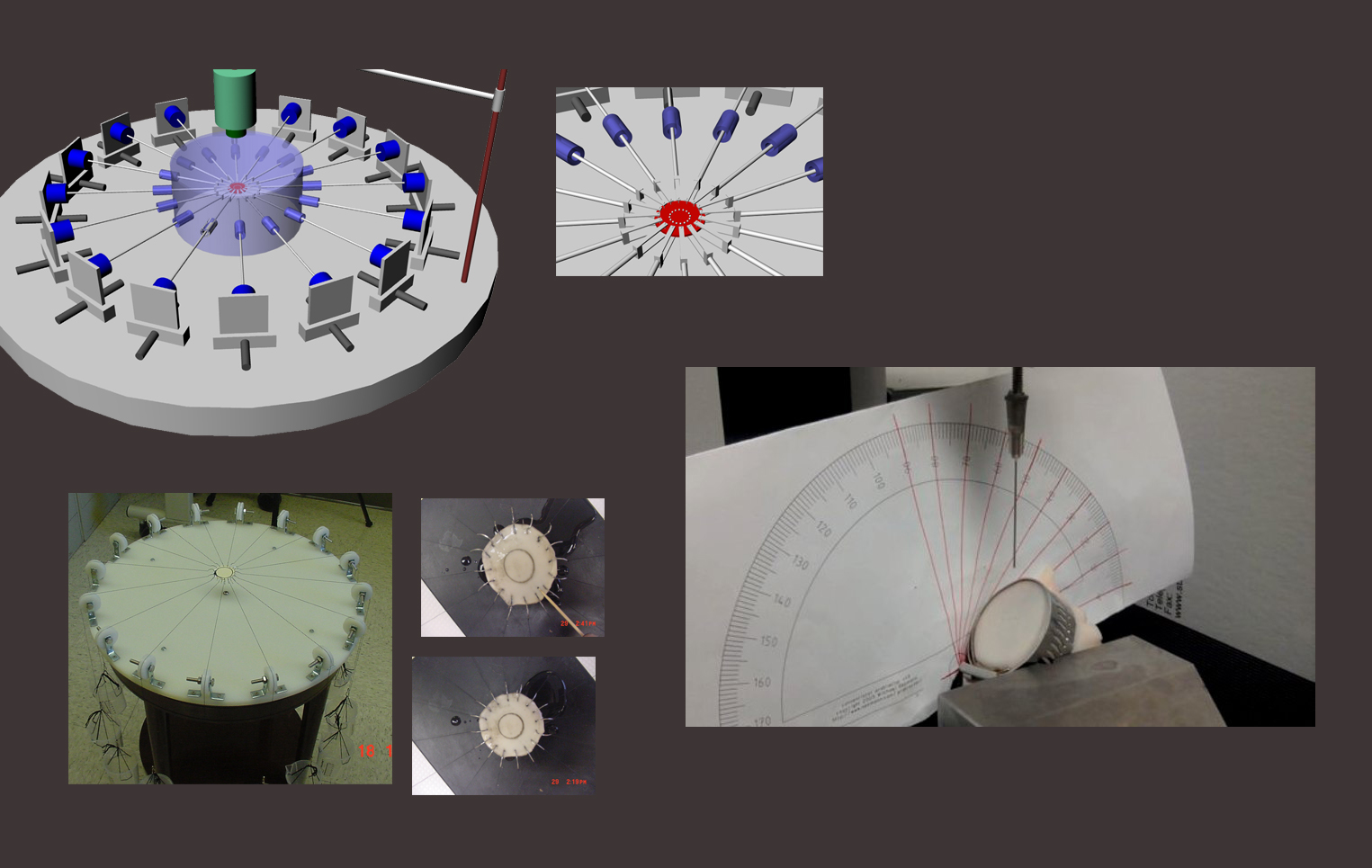

BioMOST Laboratory
Madhavan Lakshmi Raghavan, Ph. D.
Affiliated with CCAD and BME @Iowa
Research Areas in the BioMOST Lab
Note: This is only an overview of focus areas. Detailed information on specific projects may be found in the pages of lab students and staff.
Publications
- Raghavan ML, Lin K, Ramachandran M, Nadareshvili A, Lu J, "Planar radial extension for constitutive modeling of anisotropic biological soft tissues", International Journal of structural changes in solids (accepted for publication), 2011
- Zhao X, Raghavan ML, Lu J, "Identifying heterogeneous anisotropic properties in cerebral aneurysms: a pointwise approach", Biomech Model Mechanobiol., in press, 2010
- Zhou X, Raghavan ML, Harbaugh RE, Lu J , "Patient-Specific Wall Stress Analysis in Cerebral Aneurysms Using Inverse Shell Model", Ann Biomed Eng, 38(2):478-89, 2010
- Kratzberg JA, Golzarian J, Raghavan ML, "Role of graft oversizing in the fixation strength of barbed endovascular grafts", Journal of Vascular Surgery, 49(6):1543-53, 2009
- Cai ZJ, Bai EW, McCabe R, Zerhouni M, Wang G, Raghavan ML, Kratzberg J, "A dynamic arterial tree phantom for studies of bolus chasing CT angiography", International Journal of Biomedical Engineering and Technology, 4(10):88-100, 2009
- Kratzberg JA, Walker PJ, Rikkers E, and Raghavan ML, "The effect of proteolytic treatment on plastic deformation of porcine aortic tissue", Journal of the Mechanical Behavior of Biomedical Materials, 2[1]:65-72, 2009.
- Lu J, Zhou X, Raghavan ML., "Inverse method of stress analysis for cerebral aneurysms", Biomech Model Mechanobiol, 7(6):477-86, 2008.
- Zhang J, Fletcher JG, Vrtiska TJ, Manduca A, Thompson JL, Raghavan ML, Wentz RJ, McCollough CH, "Large-vessel distensibility measurement with electrocardiographically gated multidetector CT: phantom study and initial experience", Radiology, 245(1):258-66, 2007
- Lu J, Zhou X, Raghavan ML, "Inverse Elastostatic Stress Analysis in Pre-deformed Biological Structures: Demonstration Using Abdominal Aortic Aneurysms", Journal of Biomechanics, 40(3):693-6, 2007
- Ma, B, Lu J, Harbaugh RE, Raghavan ML, "Nonlinear Anisotropic Stress Analysis of Anatomically Realistic Cerebral Aneurysms", Journal of Biomechanical Engineering, 129(1):88-96, 2007
- Lu J, Zhou X, Raghavan ML, "Computational Method for Inverse Elastostatics in Anisotropic Hyperelastic Solids", Journal for Numerical Methods in Engineering, 69: 1239-61, 2007
- Raghavan, M.L., J. Kratzberg, E.M. Castro de Tolosa, M.M. Hanaoka, P. Walker, and E.S. da Silva, "Regional distribution of wall thickness and failure properties of human abdominal aortic aneurysm", Journal of Biomechanics, 39(16):3010-6, 2006.
- Raghavan ML, Ma B, Fillinger MF, "Non-invasive determination of zero-pressure geometry of arterial aneurysms", Annals of Biomedical Engineering, 34(9):1414-9, 2006
- Raghavan, M.L., M.F. Fillinger, S.P. Marra, B.P. Naegelein, and F.E. Kennedy, "Automated methodology for determination of stress distribution in human abdominal aortic aneurysm", ASME Journal of Biomechanical Engineering, 127(5):868-71, 2005 Oct
- Raghavan ML, Kratzberg JA, Golzarian J., "Introduction to biomechanics related to endovascular repair of abdominal aortic aneurysm", Techniques in Vascular Interventional Radiology, 8(1):50-5, 2005 Mar.
- Raghavan, M.L., B. Ma, and R.E. Harbaugh, "Quantified Aneurysm Shape and Rupture Risk", Journal of Neurosurgery, 102(2): p. 355-62, 2005.
- Kratzberg JL, S. Greifzu, K. Larson, J. Dittman, M. McCormick, M. Keller, M.L. Raghavan, "Fabrication of a patient-specific replica of abdominal aortic aneurysm with realistic compliance and translucency", International Journal of Cardiovascular Medicine, 5(1), 33-38, 2005.
- Ma B, Harbaugh RE, and Raghavan ML, "Three-dimensional Geometric characterization of cerebral aneurysms", Annals of Biomedical Engineering, 3(2): 264-73, 2004 Feb.
- Raghavan ML, Trivedi S, Nagaraj A, McPherson DD, Chandran KB, "Three-Dimensional Finite Element Analysis of Residual Stress in Arteries", Annals of Biomedical Engineering, 3(2): 257-63, 2004 Feb.
- Fillinger MF. Marra SP. Raghavan ML. Kennedy FE, "Prediction of rupture risk in abdominal aortic aneurysm during observation: wall stress versus diameter", Journal of Vascular Surgery. 37(4):724-32, 2003
- Fillinger, MF, Raghavan ML, Marra SP, Cronenwett JL, Kennedy FE, "In Vivo Analysis of Mechanical Wall Stress and AAA Rupture Risk", Journal of Vascular Surgery, 36(3): 589-597, 2002
- Raghavan ML, Vorp DA. Toward a biomechanical tool to evaluate rupture potential of abdominal aortic aneurysm: identification of a finite strain constitutive model and evaluation of its applicability. Journal of Biomechanics. 33(4): 475-82, Apr 2000
- Raghavan ML, Vorp DA, Federle MP, Makaroun MS, Webster MW. Wall stress distribution on three-dimensionally reconstructed models of human abdominal aortic aneurysm. Journal of Vascular Surgery. 31(4): 760-9, Apr 2000
- Sacks MS, Vorp DA, Raghavan ML, Federle MP, Webster MW. In vivo three-dimensional surface geometry of abdominal aortic aneurysms. Annals of Biomedical Engineering. 27(4): 469-79, 1999
- Vorp DA, Raghavan ML, Webster MW. Mechanical wall stress in abdominal aortic aneurysm: influence of diameter and asymmetry. Journal of Vascular Surgery. 27(4): 632-9, Apr 1998
- Raghavan ML, Webster MW, Vorp DA. Ex vivo biomechanical behavior of abdominal aortic aneurysm: assessment using a new mathematical model. Annals of Biomedical Engineering. 24(5): 573-82, 1996
- Vorp DA, Raghavan ML, Muluk SC, Makaroun MS, Steed DL, Shapiro R, Webster MW. Wall strength and stiffness of aneurysmal and nonaneurysmal abdominal aorta. Annals of the New York Academy of Sciences. 800: 274-6, Nov 1996
- Vorp DA, Raghavan ML, Borovetz HS, Greisler HP, Webster MW. Modeling the transmural stress distribution during healing of bioresorbable vascular prostheses. Annals of Biomedical Engineering. 23(2): 178-88, 1995




